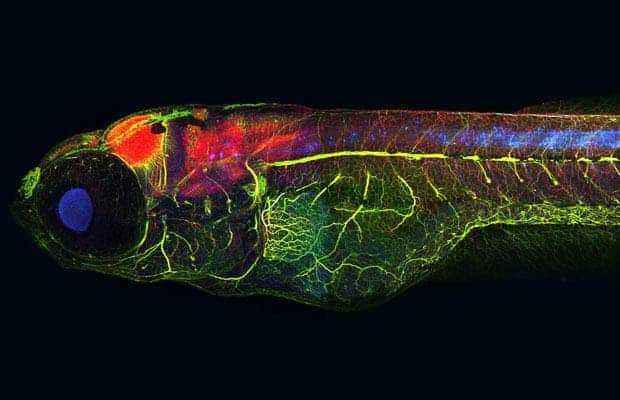
What evolutionary traits helped humans become the dominant species on Earth? Our dexterous limbs and complex nervous system certainly played a major role, allowing human to manipulated the world and handle tools. Physicians are very interested in studying motor neural circuits to make better therapies when things go wrong, and to attain a comprehensive understanding one needs to get to the absolute root, even million of years back in the evolutionary timeline.
After studying zebrafish closely, a favorite lab bet for neuroscientists, researchers at Northwestern University found that the spinal cord circuits that produce body bending in swimming fish are more complicated than previously thought.
[ALSO READ] Zebrafish can regenerate their brains after injury
Before articulated limbs evolved, complete with complex muscle and neural structures, vertebrate locomotion employed extremely simple left-right bending motion of the body exemplified by lampreys to the appearance of fins in bony fish.
Seeing through the brain
Neuroscientists Martha W. Bagnall and David L. McLean chose to study the motor neurons of baby zebrafish because the fish develop quickly and are see-through, allowing them to directly peer through the fish’s nervous system. They found the neural circuits that drive muscle movement on the dorsal (or back) side are separate from the neural circuits activating muscles on the ventral (or front) side. This allows the animal to twist its body upright when it senses that it has rolled too far to one side or the other. –
“This arrangement is perfectly suited to provide rapid postural control during swimming,” Bagnall said. “Importantly, this ancestral pattern of spinal cord organization may also represent an early functional template for the origins of limb control.”
Differential control of an animal’s musculature is the absolute basic template from which more complex limbs can evolve. The separate dorsal and ventral muscles control in the zebrafish hint to a possible precursor mechanism to separate control of extensors and flexors in human limbs. By tweaking the connections between these circuits as they elaborated during evolution, it is easier to explain how more complicated patterns of motor coordination in the limbs and trunk could have arisen during dramatic evolutionary changes in the vertebrate body plan, the researchers said.
“This knowledge will put us in a better position to devise more effective therapies for when things go wrong with neural circuits in humans, such as spinal cord damage,” McLean said. “If you want to fix something, you have to know how it works in the first place. Given that the fish spinal cord works in a similar fashion to our own, this makes it a fantastic model system for research.”
“We are teasing apart basic components of locomotor circuits,” McLean said. “The molecular mechanisms responsible for building spinal circuits are conserved in all animals, so this study provides a nice hypothesis that scientists can test.”
Findings were reported in the journal Science.






